Experimental and Numerical Investigation of the Anti-Overturning Theory of Single-Column Pier Bridges
Abstract
1. Introduction
2. Field Test
2.1. Project Overview
2.2. Typical Vehicle Identification
- (1)
- The vehicle type has a long body and a large load; the total weight of the body included in the load is 3 to 4 times the weight of the empty vehicle. This weight is even higher when loaded.
- (2)
- Most vehicles in this category travel at night, and it is often the case that multiple vehicles travel in the same direction.
- (3)
- Such vehicles tend to be spaced closely in multivehicle forward situations.
- (4)
- These vehicles are safer than the five-axle trailer that is used for testing.
2.3. Typical Vehicle Load Loading
2.4. Displacement Measurement Point Arrangement
2.5. Strain Measurement Point Arrangement
2.6. Data Acquisition and Reading
3. Numerical Analysis
3.1. Theoretical Calculation Method of Overturning Resistance
3.2. Finite Element Model
3.3. Data Comparison and Analysis
- (1)
- With increasing eccentric load, the reaction force of the side-end support without an eccentric load gradually decreases, which is in line with the capsizing mechanism of the single-column pier mentioned above.
- (2)
- Under the three different working conditions of single-truck loading, double-vehicle loading, and triple-vehicle loading, the calculation results of the bearing reaction of the elastomer FE model are closer to the field test data. At supports 0-1 and 4-1, the bearing reaction force calculated by the rigid model is larger than that calculated from the field test data, and the elastic model calculates that the bearing reaction force is less than that calculated from the field test data. Therefore, in the FE simulation, it is more practical and safer to consider the superstructure of the bridge as an elastic model.
4. Parameter Analysis of the Anti-Overturning Stability of a Single-Column Pier Bridge
4.1. Influence of the Side-to-Main Span Ratio on the Overturning Resistance of a Single-Column Pier
4.2. Influence of Bridge Span Parameters on the Overturning Resistance of a Single-Column Pier
4.3. Influence of the Bearing Spacing on the Overturning Resistance of a Single-Column Pier
4.4. Influence of Eccentric Distance on the Overturning Resistance of a Single-Column Pier
4.5. Influence of Line Weight on the Overturning Resistance of a Single-Column Pier
4.6. Influence of Torsional Rigidity on the Overturning Resistance of a Single-Column Pier
5. Conclusions
- (1)
- By establishing a rigid model and an elastic model, the support reaction force calculated by the two FE models is compared with the support reaction force obtained in the field, which shows that it is more reliable and safer to consider the elastic model of the girder.
- (2)
- The rotational and overturning ultimate loads of the single-column pier girder bridge are related to the ratio of the side to the main span of the bridge, the number of spans, the bearing spacing, the loading position, the concrete weight, and the torsional rigidity. When the edge-to-medium span ratio gradually decreases, the bearing reaction force at the end bearing decreases until it fails. As the bridge span increases, the bearing reaction force decreases. As the bearing spacing increases, the bearing reaction force at the end bearing increases. As the eccentric loading distance of the vehicle increases, the bearing reaction force gradually decreases. As the concrete weight increases, the bearing reaction force at the end bearing increases. Finally, when the torsional stiffness of the bridge increases, the bearing reaction force at the end bearing also increases.
- (3)
- In the overturning reinforcement of the single-column pier, it is beneficial to increase the bridge edge-to-span ratio and consider increasing the bearing spacing to improve the overturning stability of the single-column pier bridge. At the same time, under the condition that the total length of the bridge remains unchanged, reducing the span of the bridge can also effectively enhance the overturning performance of a bridge that has one column pier. In addition, the bridge self-weight provides an overturning moment during the overturning process, so the influence of this self-weight needs to be considered during the design calculation. In the operation of the single-column pier, large heavy vehicles are restricted to taking the middle lane to prevent the bearing from failing.
- (4)
- For bridges with single-column piers that need to be reinforced, the replacement of supports with large lateral dimensions and low heights should be considered; for bridges with single-column piers with double-support systems, the distance between supports can be increased. For bridges with single-column piers that are not easy to replace or where the pier beam is consolidated, diagonal braces can be installed at the pier, or limit devices at the joints of the pier beam can be set to reduce the risk of overturning.
- (5)
- Previous research on single-column piers lacked practicality. In this paper, the calculation theory and FE simulation method of a single-column pier are verified by carrying out a real bridge test, which provides valuable data for the study of the anti-overturning stability of a single-column pier. In the future, we plan to focus on the study of the anti-overturning stability of curved girder bridges and steel box girder bridges with single-column support structures from the perspectives of structure and material.
Author Contributions
Funding
Institutional Review Board Statement
Informed Consent Statement
Data Availability Statement
Conflicts of Interest
References
- Wan, S.C.; Huang, Q. A review of overturning stability of continuous girder bridge with single column pier under deflection load. J. China Foreign Highw. 2015, 35, 156–161. [Google Scholar]
- McManus, P.; Nasir, G. Horizontally Curved Girders-State of the Art. J. Struct. Div. 1969, 20, 34–56. [Google Scholar] [CrossRef]
- Li, G.H. Structural Stability and Vibration of Bridges; China Railway Press: Beijing, China, 1992; pp. 154–196. [Google Scholar]
- Streit, W.; Mang, R. Uberschlagiger Kippsicherheitsnachweis fir Stahlbeton-und Spannbetonbinder. Bauingenieur 1984, 59, 433–439. [Google Scholar]
- Hamblye, C. Overturing instability. J. Geotech. Eng. 1990, 116, 704–709. [Google Scholar] [CrossRef]
- Michaltsos, G.T.; Raftoyiannis, I.G. A mathematical model for the rocking, overtuming andshifting problems in bridges. Eng. Struct. 2008, 30, 3587–3594. [Google Scholar] [CrossRef]
- Scattarreggia, N.; Qiao, T.Y. Earthquake Response Modeling of Corroded Reinforced Concrete Hollow-Section Piers via Simplified Fiber-Based FE Analysis. Sustainability 2021, 13, 9342. [Google Scholar] [CrossRef]
- Xu, Z.; Lu, X.Z. Progressive-Collapse Simulation and Critical Region Identification of a Stone Arch Bridge. J. Perform. Constr. Facil. 2013, 27, 43–52. [Google Scholar] [CrossRef]
- Scattarreggia, N.; Galik, W. Analytical and numerical analysis of the torsional response of the multi-cell deck of a collapsed cable-stayed bridge. Eng. Struct. 2022, 265, 114412. [Google Scholar] [CrossRef]
- Pennington, S.M. The Bussey railroad bridge collapse. In Proceedings of the 5th Forensic Engineering Congress, Washington, DC, USA, 10–15 November 2009; pp. 415–428. [Google Scholar]
- Pen, N.T.; Steven, M. Single-Pier Bridge Lateral Stability Analysis in Dynamic Load Conditions. In Proceedings of the Fourth International Conference on Transportation Engineering, Chengdu, China, 19–20 October 2013; pp. 753–772. [Google Scholar]
- Chen, Y.; Xin, G.; Li, Y. Anti-overturning stability study of a continuous steel-concrete composite girder bridge with single column piers. Chall. Adv. Sustain. Transp. Syst. 2014, 1, 571–579. [Google Scholar]
- Peng, W.B.; Dai, F. Research on Mechanism of Overturning Failure for Single-column Pier Bridge. Comput. Civ. Build. Eng. 2014, 2, 1747. [Google Scholar]
- Peng, W.B.; Zhao, H.; Dai, F.; Taciroglu, E. Analytical Method for Overturning Limit Analysis of Single-Column Pier Bridges. J. Perform. Constr. Facil. 2017, 31, 04017007. [Google Scholar] [CrossRef]
- Xiong, W.; Cai, C.S.; Kong, B.; Ye, J.S. Overturning-Collapse Modeling and Safety Assessment for Bridges Supported by Single-Column Piers. J. Bridge Eng. 2018, 22, 04017084. [Google Scholar] [CrossRef]
- Shi, X.F.; Zhou, Z.J.; Ruan, X. Failure Analysis of a Girder Bridge Collapse under Eccentric Heavy Vehicles. J. Bridge Eng. 2016, 21, 05016009. [Google Scholar] [CrossRef]
- Shi, X.F.; Cao, Z.; Ma, H.Y.; Ruan, X. Failure Analysis on a Curved Girder Bridge Collapse under Eccentric Heavy Vehicles Using Explicit Finite Element Method: Case Study. J. Bridge Eng. 2018, 22, 05018001. [Google Scholar] [CrossRef]
- Dong, F.H.; Zhang, H.H. Probabilistic Safety Factor Calculation of the Lateral Overturning Stability of a Single-Column Pier Curved Bridge under Asymmetric Eccentric Load. Symmetry 2022, 14, 1534. [Google Scholar] [CrossRef]
- Ge, L.F.; Dan, D.H.; Yan, X.F.; Zhang, K.L. Real time monitoring and evaluation of overturning risk of single-column-pier box-girder bridges based on identification of spatial distribution of moving loads. Eng. Struct. 2020, 210, 110383. [Google Scholar] [CrossRef]
- JTG/T 3362-2018; Specifications for Design of Highway Reinforced Concrete and Prestressed Concrete Bridges and Culverts. Standards Press: Beijing, China, 2018.
- JTG D60-2015; General Specifications for Design of Highway Bridges and Culverts. Standards Press: Beijing, China, 2015.
- AASHTO. AASHTO LRFD Bridge Design Specifications. Standard Specifications for Highway Bridges; AASHTO: Washington, DC, USA, 2002. [Google Scholar]
- JTG D62-2004; General Code for Desigh of Highway Bridges and Culverts. Standards Press: Beijing, China, 2004.
- JTG D62-2012; Specifications for Design of Highway Reinforced Concrete and Prestressed Concrete Bridges and Culverts. Standards Press: Beijing, China, 2012.
- Li, L.; Zhang, L. Safety assessment of anti-overturning of single pier of bridge. In Proceedings of the International Conference on Smart Transportation and City Engineering, Chongqing, China, 6–8 August 2021; Volume 12050, p. 120502N. [Google Scholar]
- Zhuang, D.L.; Xiao, R.C. Failure analysis for overall stability against sliding and overturning of a girder bridge. Eng. Fail. Anal. 2019, 109, 104271. [Google Scholar] [CrossRef]
- Cheng, B. Theoretical Study on the Calculation of Anti-Overturning Capacity of Single Column Pier Curved Bridge. Master’s Thesis, Zhejiang University of Technology, Hangzhou, China, 2016. [Google Scholar]
- Pan, R.D. Research on Calculation Theory and Method of Anti-Overturning of Straight Single-Column Bridge. Master’s Thesis, Zhejiang University of Technology, Hangzhou, China, 2016. [Google Scholar]
- Song, G.H.; Che, D.L. Overturning Axis Selection in Curved Box-Girder Bridges with Single-Column Piers. Math. Probl. Eng. 2018, 2018, 9206138. [Google Scholar] [CrossRef]
- Chen, L.; Wu, H. Full-Scale Experimental Study of a Reinforced Concrete Bridge Pier under Truck Collision. J. Bridge Eng. 2021, 26, 05021008. [Google Scholar] [CrossRef]
- Fang, C.; Yosef, T.Y. Residual Axial Capacity Estimates for Bridge Columns Subjected to Combined Vehicle Collision and Air Blast. J. Bridge Eng. 2021, 26, 7. [Google Scholar] [CrossRef]
- Zhao, M.H.; Deng, Y.S.; Liu, J.H. Finite element analysis of displacements of double pile-column bridge piers at steep slope. J. Cent. South Univ. 2013, 20, 3683–3688. [Google Scholar] [CrossRef]
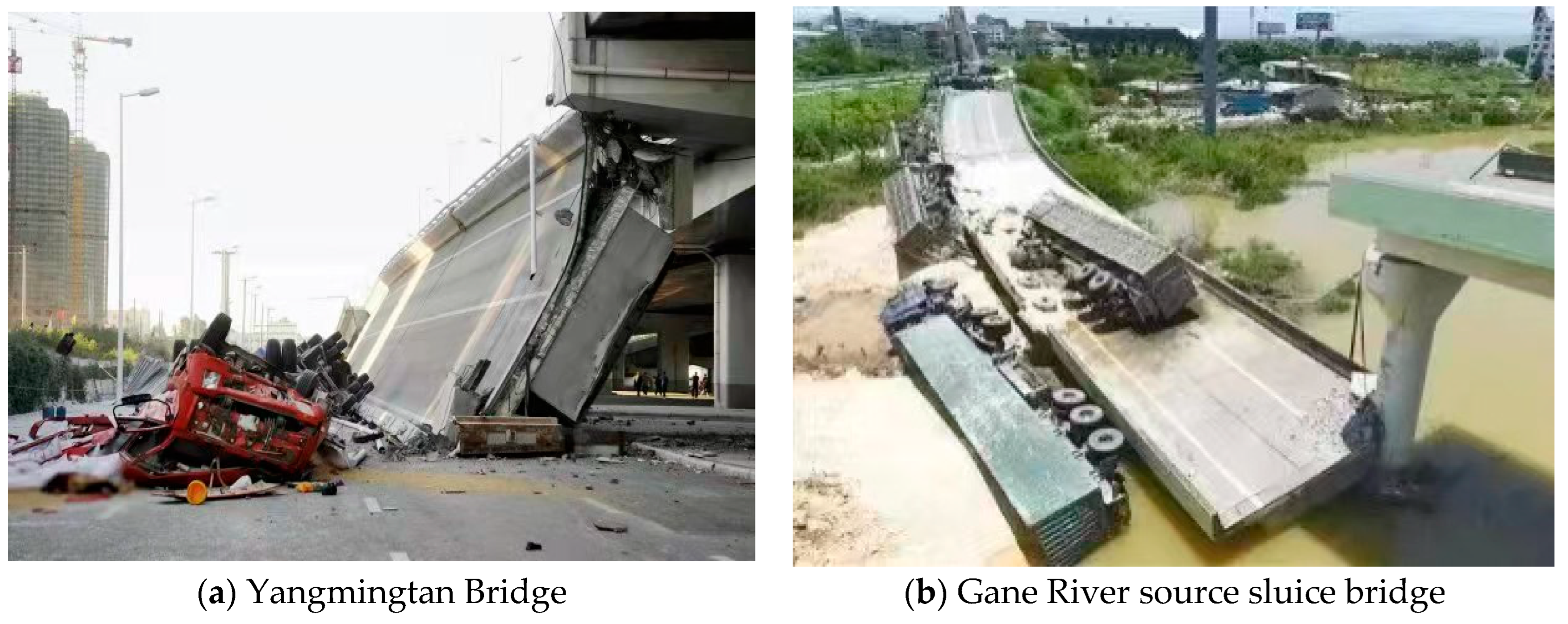


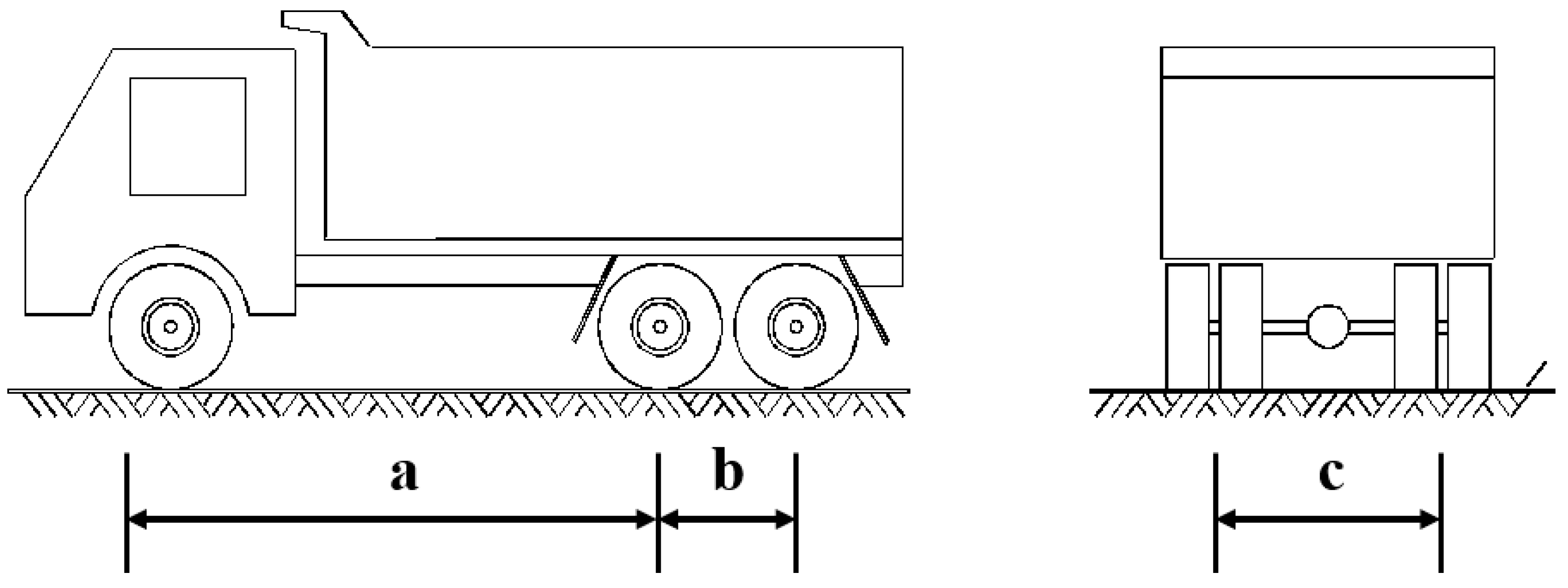
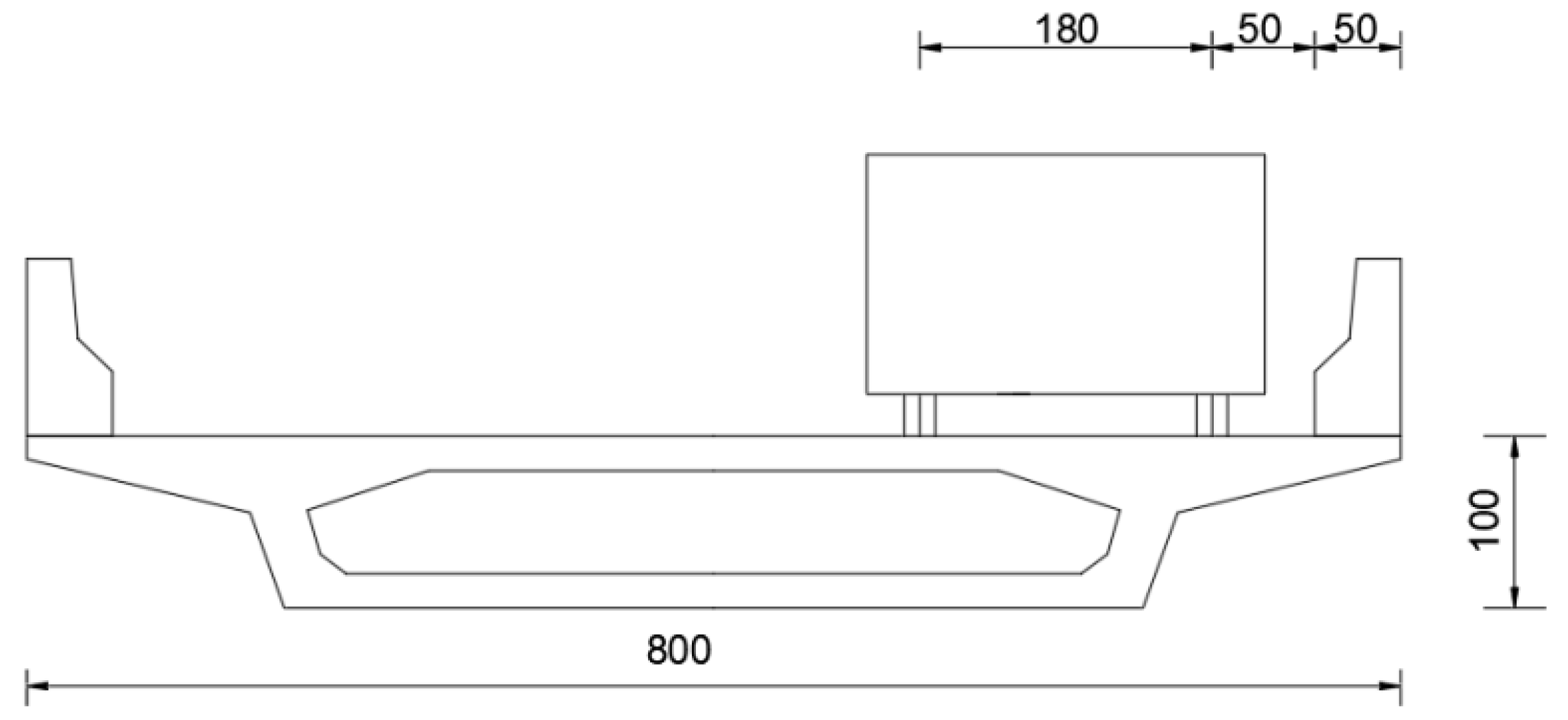

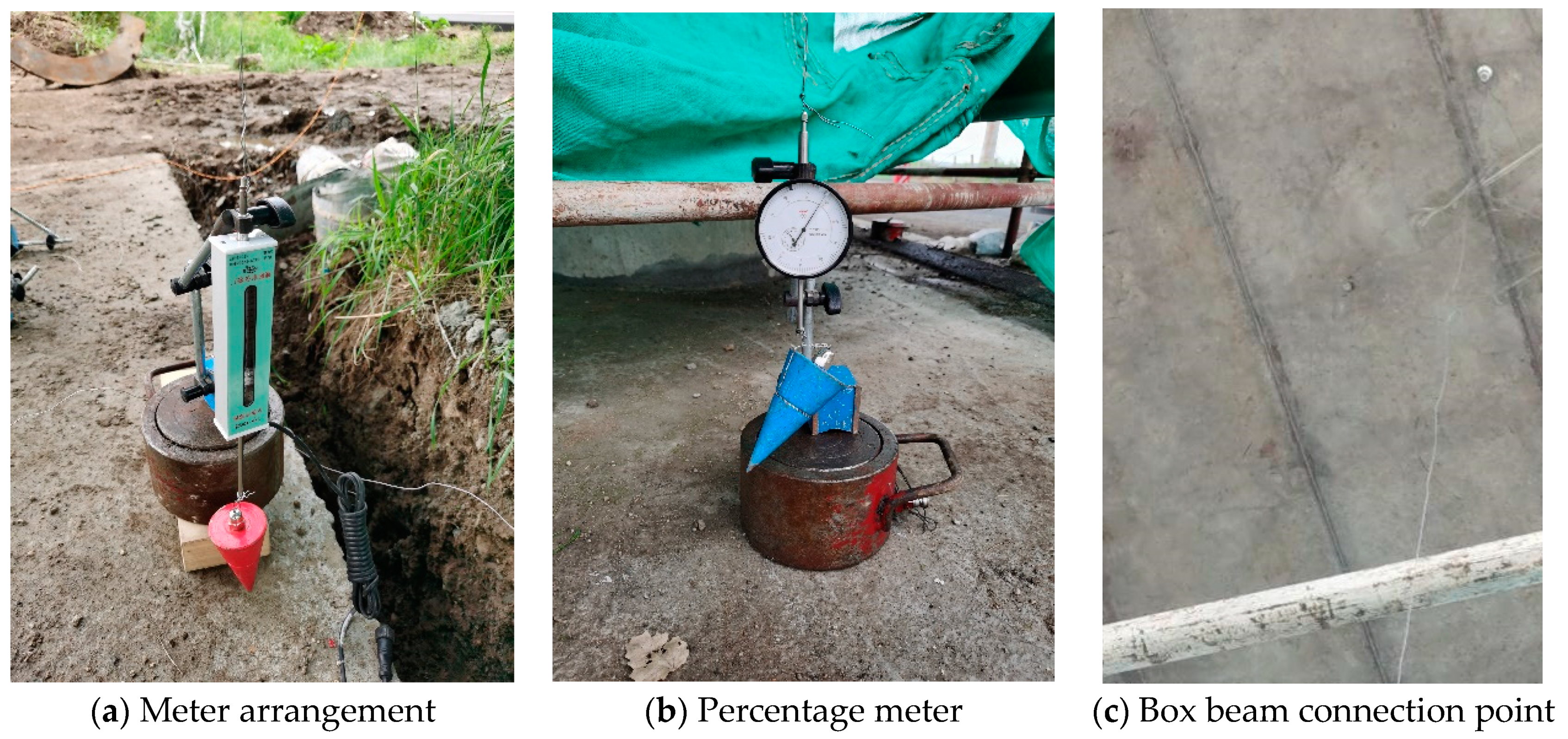


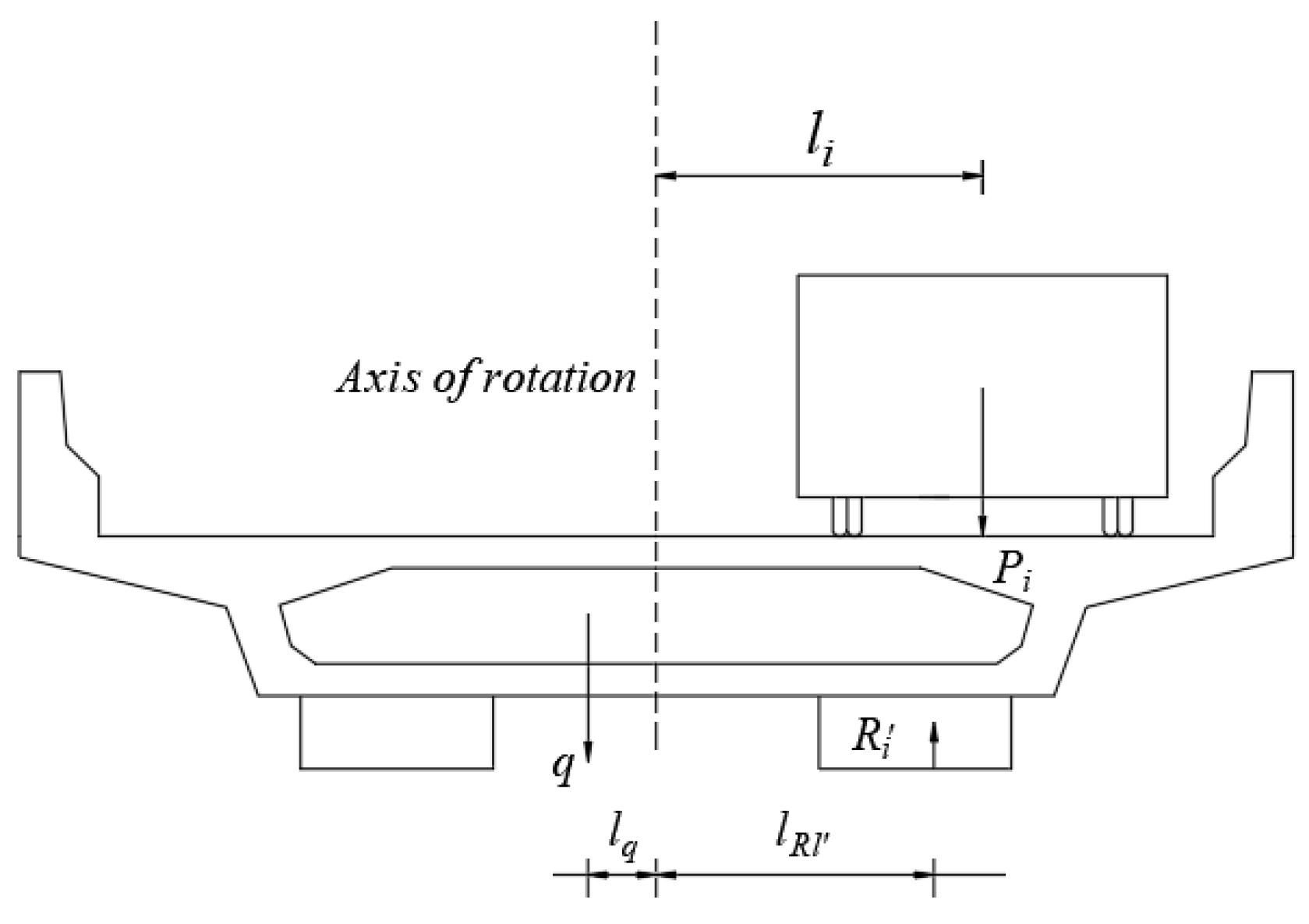
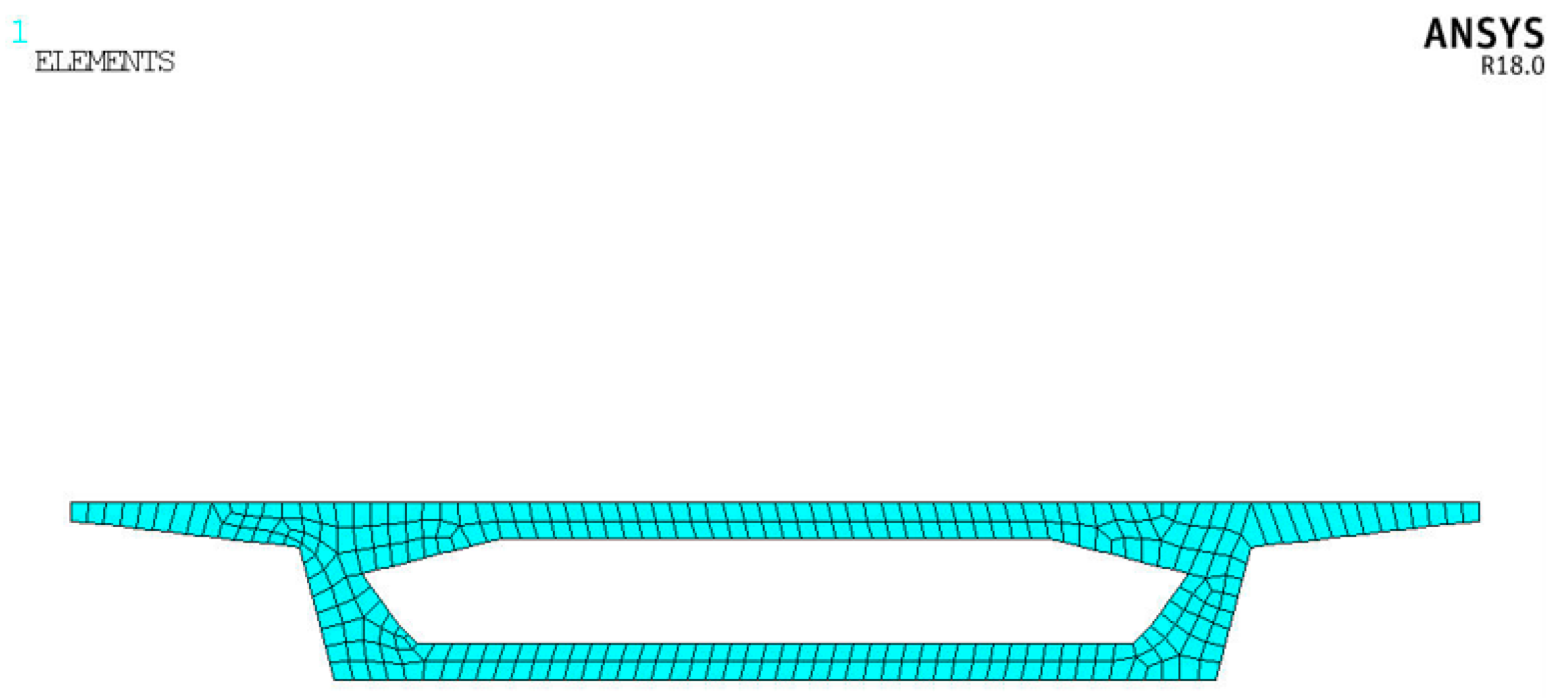

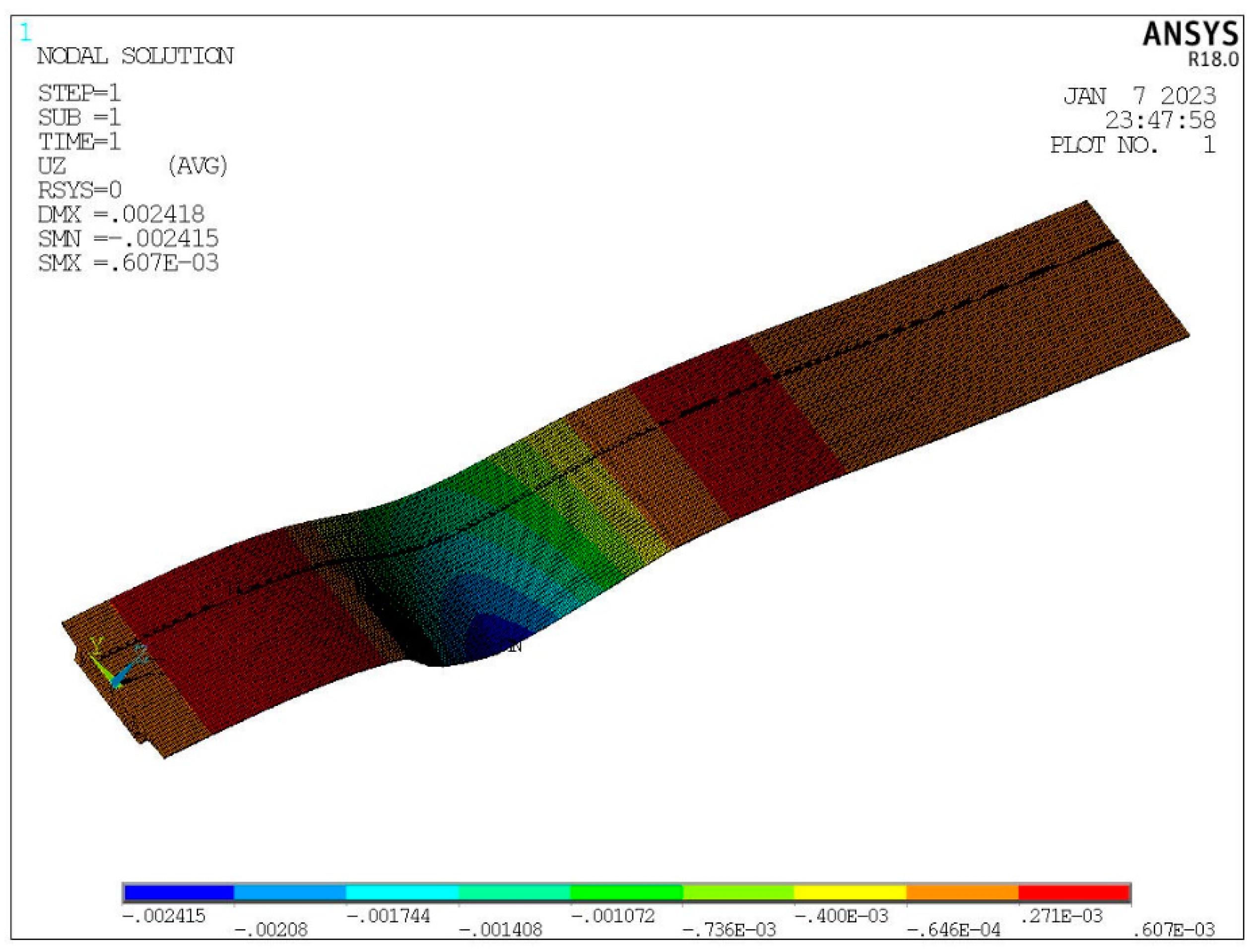
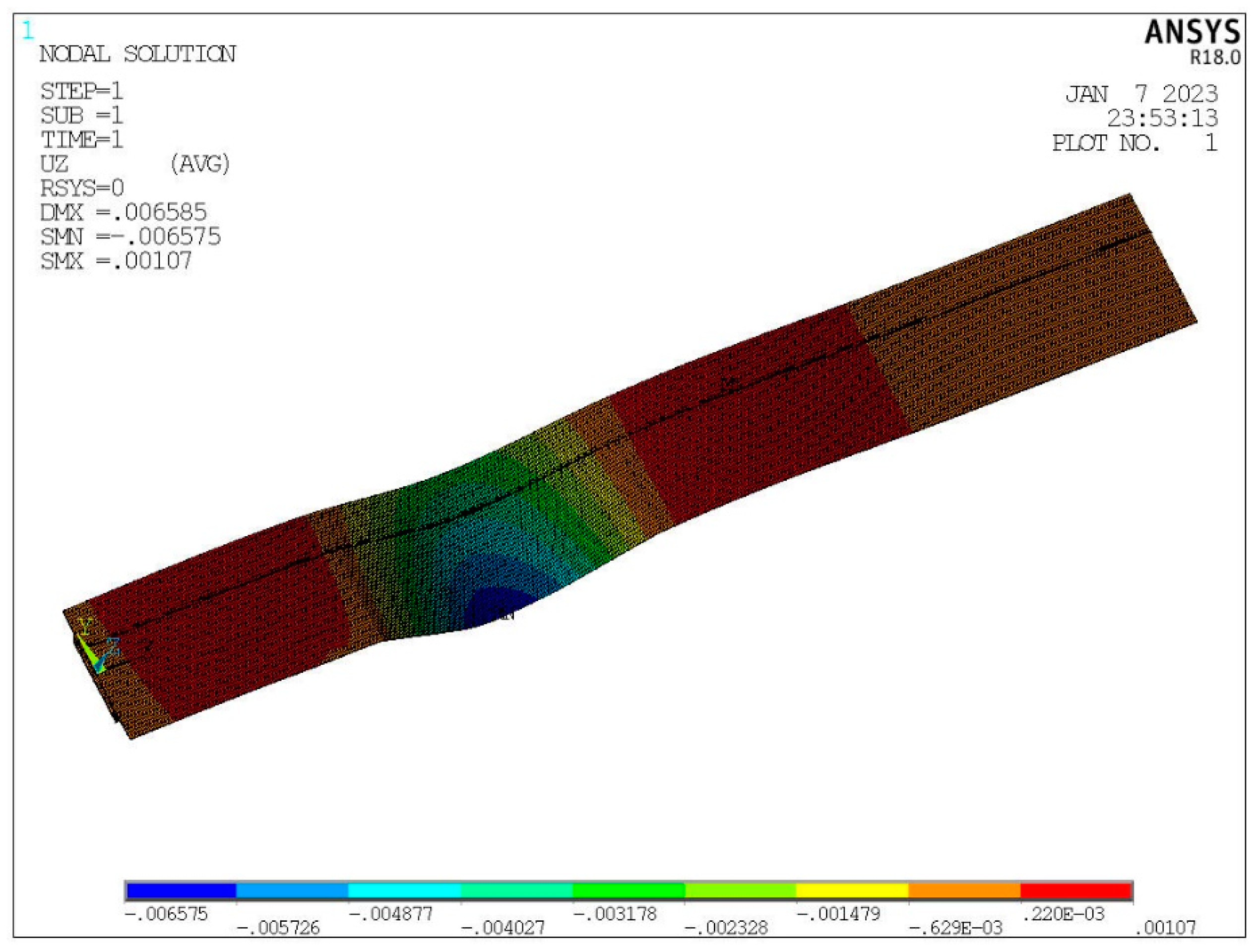



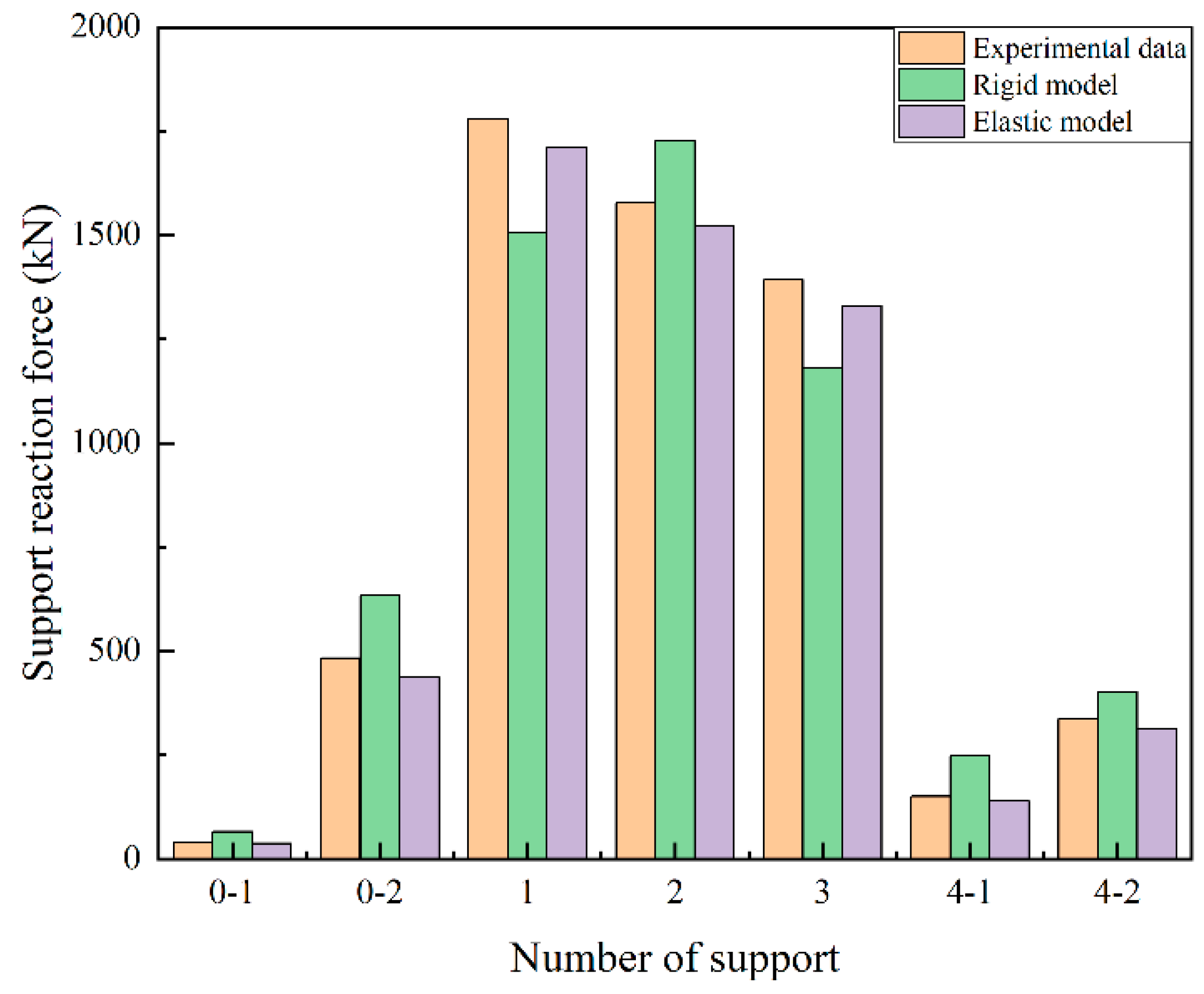








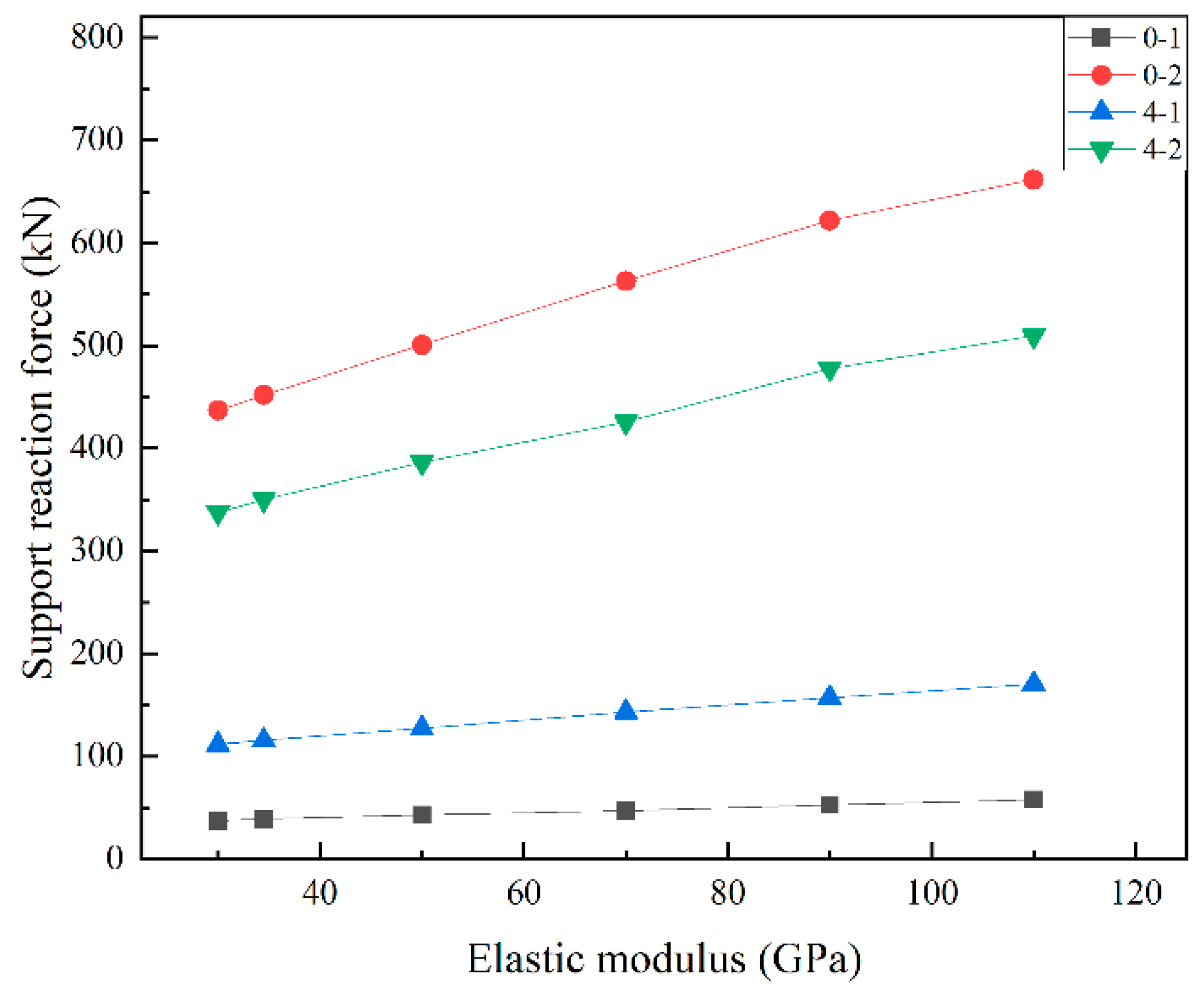
| Times | Sites | Aftermath |
|---|---|---|
| 23 October 2007 | Inner Mongolia Viaduct | 4 injured |
| 15 July 2009 | Zinjin Expressway Gate Road Bridge | 6 dead, 4 injured |
| 21 February 2011 | Zhejiang Chunhui Bridge | 3 injured |
| 24 August 2012 | Harbin Yangmingtan Bridge | 3 dead, 5 injured |
| 19 June 2015 | Gan-E Expressway Heyuan Gate Road Bridge | 1 dead, 4 injured |
| 10 October 2019 | Wuxi City Viaduct | 3 dead, 2 injured |
| 18 December 2021 | Huayu Expressway Huawu Interchange Gate Road Bridge | 4 dead, 8 injured |
| Serial Number | Axis Distance (cm) | Rear Axle Wheelbase of c (cm) | Front Axle Weight (kN) | Total Weight of Middle and Rear Axle (kN) | Total Weight (kN) | |
|---|---|---|---|---|---|---|
| Front Center Wheelbase of a | Middle and Rear Wheel of b | |||||
| 1 | 400 | 140 | 180 | 80 | 320 | 400 |
| Condition | Wheel Loading Position | ||||||||
|---|---|---|---|---|---|---|---|---|---|
| Vehicle 1 | Vehicle 2 | Vehicle 3 | |||||||
| Rear Axle | Middle Axle | Front Axle | Rear Axle | Middle axle | Front Axle | Rear Axle | Middle Axle | Front Axle | |
| Single vehicle | 16.6 | 18 | 22 | - | - | - | - | - | - |
| Double vehicle | 10.4 | 11.8 | 15.8 | 20.3 | 21.7 | 25.7 | - | - | - |
| Triple vehicle | 7.7 | 9.1 | 13.1 | 17.6 | 19.0 | 23.0 | 27.5 | 28.9 | 32.9 |
| Bearing Number | 0-1 | 0-2 | 1 | 2 | 3 | 4-1 | 4-2 |
|---|---|---|---|---|---|---|---|
| Reaction force | 242.1 | 242.1 | 1414.9 | 1362.0 | 1414.9 | 242.1 | 242.1 |
Disclaimer/Publisher’s Note: The statements, opinions and data contained in all publications are solely those of the individual author(s) and contributor(s) and not of MDPI and/or the editor(s). MDPI and/or the editor(s) disclaim responsibility for any injury to people or property resulting from any ideas, methods, instructions or products referred to in the content. |
© 2023 by the authors. Licensee MDPI, Basel, Switzerland. This article is an open access article distributed under the terms and conditions of the Creative Commons Attribution (CC BY) license (https://creativecommons.org/licenses/by/4.0/).
Share and Cite
Xu, H.; Li, Q.; Li, D.; Jiang, H.; Wang, T.; Gao, Q. Experimental and Numerical Investigation of the Anti-Overturning Theory of Single-Column Pier Bridges. Sustainability 2023, 15, 1545. https://doi.org/10.3390/su15021545
Xu H, Li Q, Li D, Jiang H, Wang T, Gao Q. Experimental and Numerical Investigation of the Anti-Overturning Theory of Single-Column Pier Bridges. Sustainability. 2023; 15(2):1545. https://doi.org/10.3390/su15021545
Chicago/Turabian StyleXu, Hao, Qiyuan Li, Dongcai Li, Haonan Jiang, Tong Wang, and Qingfei Gao. 2023. "Experimental and Numerical Investigation of the Anti-Overturning Theory of Single-Column Pier Bridges" Sustainability 15, no. 2: 1545. https://doi.org/10.3390/su15021545
APA StyleXu, H., Li, Q., Li, D., Jiang, H., Wang, T., & Gao, Q. (2023). Experimental and Numerical Investigation of the Anti-Overturning Theory of Single-Column Pier Bridges. Sustainability, 15(2), 1545. https://doi.org/10.3390/su15021545







